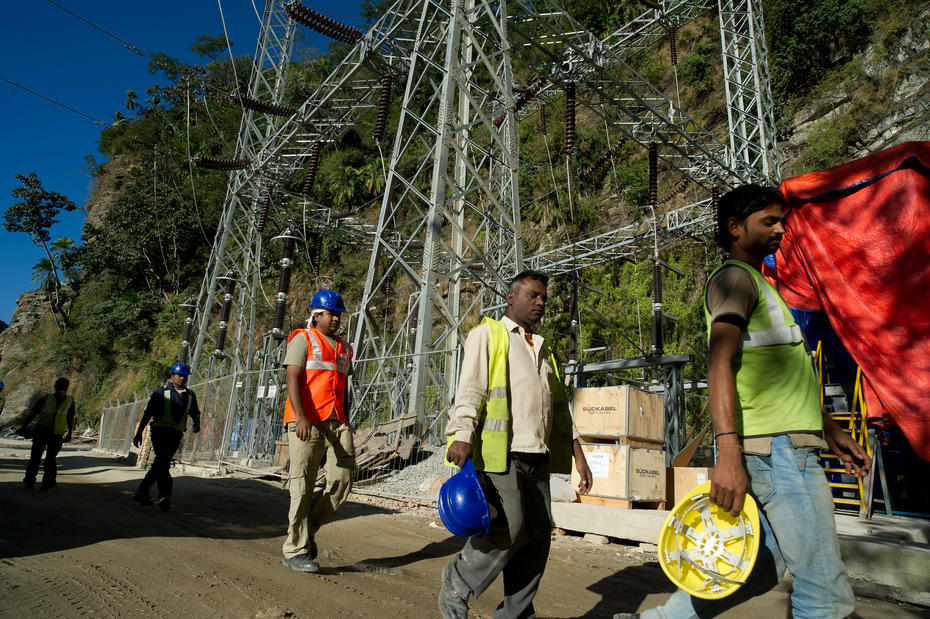During the run-up and first week of the Paris climate talks, the biggest greenhouse gas emitters stole the most headlines. China, the United States, the European Union, India, and Russia account for more than half of all global emissions, so it makes sense for their carbon commitments to be closely scrutinized. But 150 countries submitted climate pledges to the United Nations, and if you look beyond the big five, you’ll find there are other fascinating stories to be told.
Most interesting are the few countries that are already carbon negative, at least according to their own calculations. These national carbon sinks aren’t pioneers in green energy, nor are their citizens scrupulously focused on their ecological footprints. They just lead lives that are different from most peoples around the world, and they treat their piece of the planet differently too. Americans and other Westerners may not be ready to adopt their lifestyles wholesale, but we could certainly learn a thing or two.
My favorite example is Bhutan. Nestled between India and China, the Himalayan nation emitted just 2.2 million tons of carbon dioxide in 2013 (the last time an inventory was taken). Bhutan is, admittedly, a small country, but that’s no reason to pshaw its carbon frugality. Luxembourg emits more than 10 million tons of CO per year—more than four times as much as Bhutan—despite having a smaller population.
The Bhutanese live closer to the land than most Americans and Europeans, and the majority work in agriculture or forestry. The country’s reliance on hydropower—by no means a perfect energy source, but at least one that doesn’t threaten the future of the planet quite so much—is also a major factor in its lower carbon output. So prolific is Bhutan’s production of hydropower that it exports a significant proportion to its energy-hungry neighbor India.

Power isn’t the only thing that Bhutan offers either. The country’s vast, largely undisturbed forests absorb far more carbon dioxide than its people produce. Occupying more than eight million acres, Bhutan’s trees could possibly absorb more than six million tons of carbon dioxide. This is a rough approximation—it’s difficult to calculate with precision the CO absorption rate for a forest—but there’s no question that Bhutan’s wilds take in several times the country’s carbon dioxide emissions.
This isn’t to say that Bhutan is some Eden. Like every country, it has its problems. It is a monarchy that has made some big mistakes on human rights, like amending its citizenship laws and leaving 100,000 Bhutanese people of Nepalese origin stateless. It also ranks in the bottom quartile of countries by GDP per capita. But, by and large, Bhutanese people don’t seem to think they are suffering. The country assesses its progress not by gross national product but by “gross national happiness.” Once you get past the terminology, which belongs on the cover of a self-help leaflet, it’s not an entirely crazy idea. The government takes data on such measures as health, education, and ecological diversity and resilience and combines the statistics to measure the country’s overall well-being.
This approach has produced dividends for the environment. An entire article of the Bhutanese constitution is dedicated to environmental protection, proving just how seriously the country takes its conservation obligations. It’s in stark contrast to other nations that have constitutional provisions protecting gun ownership but not the planet. (Need I name names?) Bhutan has also committed to leaving 60 percent of its land forested and has banned logging exports.
As a gigantic carbon sink, and with a very modest GDP, Bhutan is probably entitled to sit out this round of greenhouse gas cuts. Its report to the U.N. could have just read: “This isn’t our problem. Leave us alone.” But that’s not the approach the government took. Instead, Bhutan openly worried about the energy use of its transportation and energy sectors and promised to improve mass transit, invest in fuel cell vehicles, and develop more eco-friendly livestock management practices.
Officials in countries where emissions top the charts—many of whom complain ad nauseam that greenhouse gas management is too hard or too expensive—ought to take a look at tiny Bhutan. It’s making carbon reduction look easy.

This story originally appeared on Earthwire as “If Bhutan Can, You Can” and is re-published here under a Creative Commons license.




